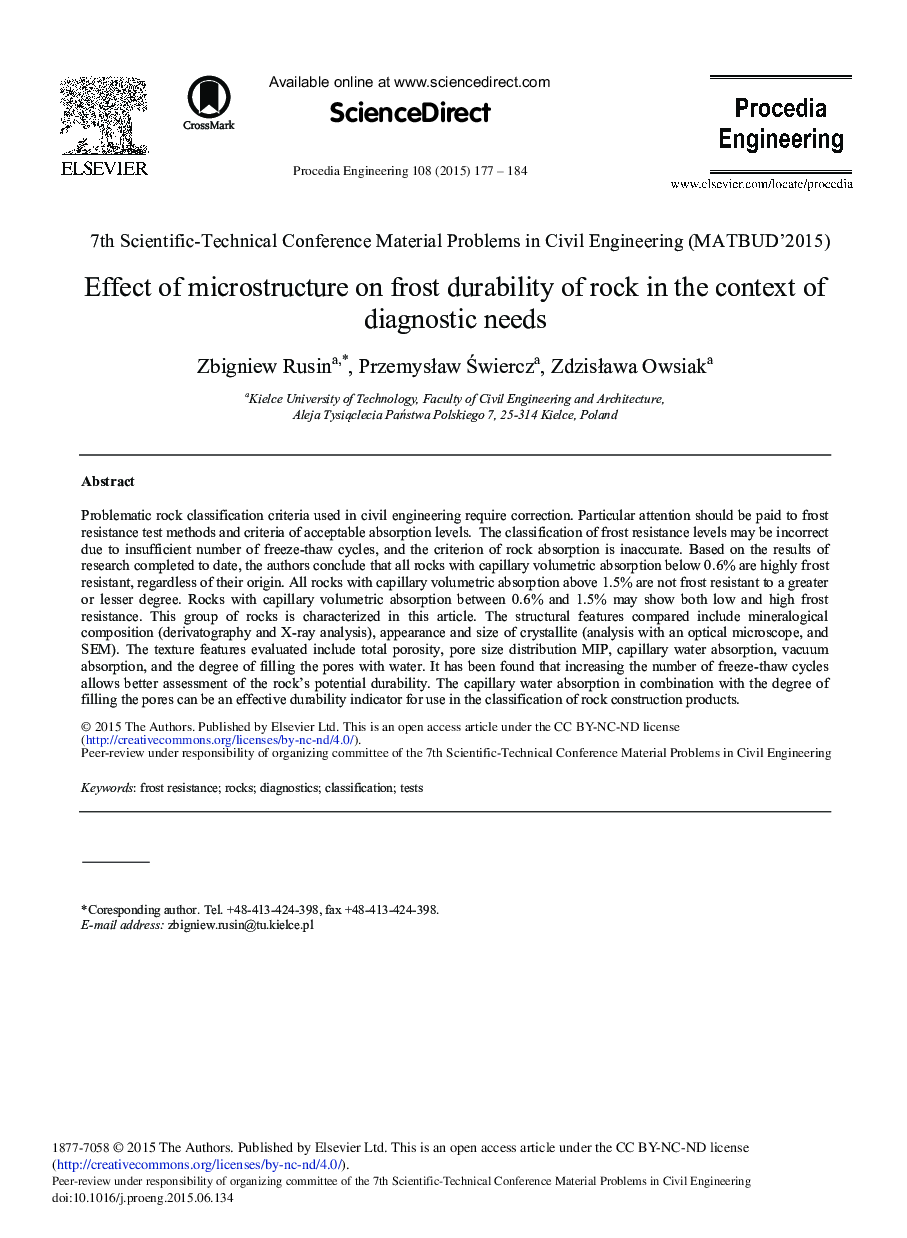| Article ID | Journal | Published Year | Pages | File Type |
|---|---|---|---|---|
| 856302 | Procedia Engineering | 2015 | 8 Pages |
Problematic rock classification criteria used in civil engineering require correction. Particular attention should be paid to frost resistance test methods and criteria of acceptable absorption levels. The classification of frost resistance levels may be incorrect due to insufficient number of freeze-thaw cycles, and the criterion of rock absorption is inaccurate. Based on the results of research completed to date, the authors conclude that all rocks with capillary volumetric absorption below 0.6% are highly frost resistant, regardless of their origin. All rocks with capillary volumetric absorption above 1.5% are not frost resistant to a greater or lesser degree. Rocks with capillary volumetric absorption between 0.6% and 1.5% may show both low and high frost resistance. This group of rocks is characterized in this article. The structural features compared include mineralogical composition (derivatography and X-ray analysis), appearance and size of crystallite (analysis with an optical microscope, and SEM). The texture features evaluated include total porosity, pore size distribution MIP, capillary water absorption, vacuum absorption, and the degree of filling the pores with water. It has been found that increasing the number of freeze-thaw cycles allows better assessment of the rock's potential durability. The capillary water absorption in combination with the degree of filling the pores can be an effective durability indicator for use in the classification of rock construction products.
